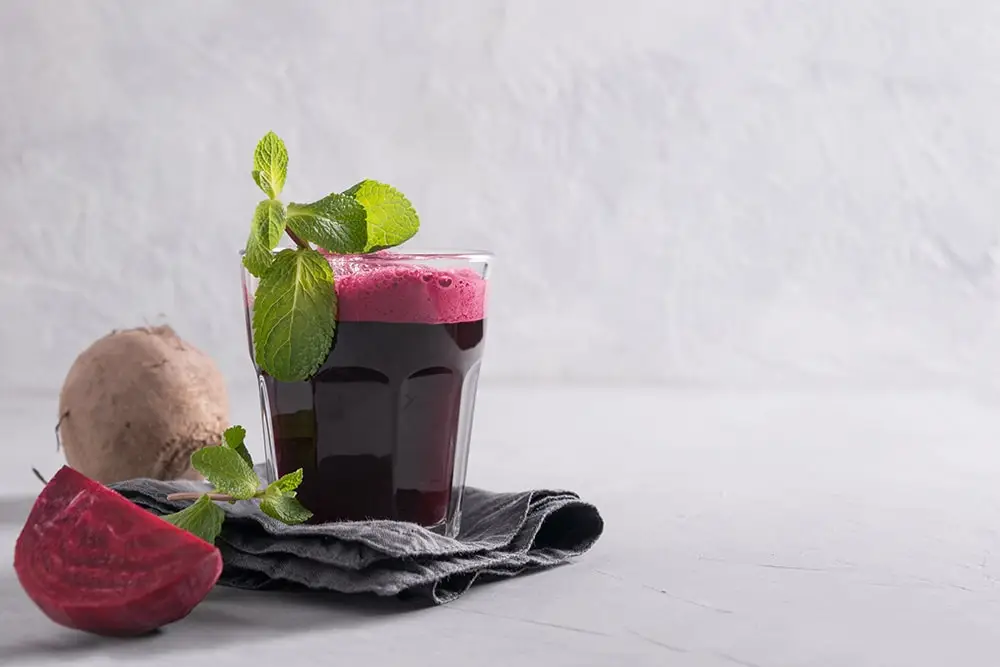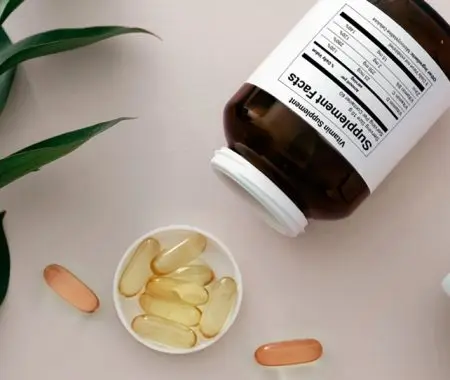Red Dye No. 3 is a synthetic color additive commonly used in food products to create a vibrant red color. The Food and Drug Administration (FDA) recently revoked its authorization for the additive’s use in food and ingested drugs. This was due to food safety concerns as lab studies showed a potential cancer risk. This decision has major implications for the food industry, especially businesses that incorporate red dye 3 in their recipes or food products.
This revocation requires businesses to reformulate products, update labels, and ensure compliance with new regulations. This article will outline current additive regulations, the FDA’s latest decision, its impact on businesses, and the steps needed to stay compliant.

What Are the Current Regulations Regarding Food Additives?
Food additives are substances added to foods to enhance flavor, appearance, texture, or shelf life. The FDA regulates food additives under the Federal Food, Drug, and Cosmetic Act (FD&C Act) to ensure they are safe before they can be used in food products. Additives must undergo a rigorous scientific review to determine whether they are classified as “generally recognized as safe” (GRAS) or require formal FDA approval.
Before an additive is approved, it is evaluated based on toxicology data, consumption levels, and long-term health effects. Manufacturers must provide evidence that an additive does not pose a significant risk to consumers before it can be legally used in food and declared on nutrition facts labels.
Color Additive Definitions
Food colorants fall into two categories:
- Certified (synthetic) color additives: These undergo batch testing to ensure that they meet purity standards. Examples of this additive include Red No. 3 and Red No. 40, which are widely used in processed foods and beverages.
- Exempt (natural) color additives: These are naturally derived from plant, animal, or mineral sources and do not require batch certification. Examples include beet juice which has a red hue to it, and paprika extract which emulates an orange-red color when added to foods.
Regulations on Synthetic Dyes
Some synthetic food dyes have been linked to health risks and hyperactivity in children, prompting restrictions in Europe and other regions. In response, the European Union (EU) mandates warning labels on products containing certain artificial dyes so consumers are warned about their potential effects on behavior.
In contrast, the U.S. Food and Drug Administration continues to allow most synthetic dyes but enforces specific usage limits to regulate their presence in food products. Ongoing research on food dyes, including Red No. 40 and Yellow No. 5, continues to shape discussions on future food industry regulations and consumer safety measures.
Prohibited and Restricted Food Additives
Several food additives have been banned or restricted due to food safety concerns, including:
- Cyclamate (Artificial Sweetener): Banned in the U.S. due to its potential link to bladder cancer.
- Brominated Vegetable Oil (BVO): A ban was proposed due to links to thyroid dysfunction and other health risks.
- Potassium Bromate: Restricted in the U.S. and banned in other countries over potential cancer risks.
- Propylparaben: Limited due to concerns over endocrine disruption and potential reproductive harm.
Federal law currently approves nine certified color additives for use in food, except for red 3. These certified dyes undergo strict batch testing to ensure safety and purity. You can find the complete list and regulatory details on the FDA’s official resource.
What is Red Dye No. 3?
Red Dye No. 3, also known as erythrosine, is a synthetic food coloring derived from fluorone compounds, which gives it a bright pink-red appearance. It was first introduced in the early 20th century and is an additive incorporated into processed foods, medications, and cosmetics.
See How FoodLabelMaker Can Help You
What Foods Have Red Dye 3?
The Red Dye No. 3 additive is found in a variety of processed foods, mainly sweets and brightly colored snacks. However, it can even be found in meat products or general candies which are eaten or purchased by shoppers daily.
Here is a list of foods with red dye 3 in them:
- Candy corn
- Gummies
- Artificially colored fruit snacks like fruit rollups
- Colored frostings
- Cake mixes
- Breakfast pastries
- Flavored chips
- Marshmallow-based treats
- Maraschino cherries
- Certain syrups
- Sprinkles
- Popsicles
- Strawberry-flavored ice cream
- Sausages
The following medications also contain red dye 3:
- Acetaminophen and Diphenhydramine Hydrochloride: A pain reliever and sleep aid used for headaches, muscle aches, and nighttime cold relief.
- Acyclovir: An antiviral medication used to treat herpes infections, including cold sores and shingles.
- Dexmethylphenidate Hydrochloride: A stimulant used to improve focus and control ADHD symptoms in children and adults.
- Doxycycline Monohydrate: An antibiotic prescribed for bacterial infections, acne, respiratory illnesses, and Lyme disease.
- Gabapentin: A medication used to treat nerve pain, epilepsy, and restless leg syndrome.

What has Changed with the Latest Red Dye 3 Ban?
The FDA released a statement officially revoking authorization for Red No. 3 in food and ingested drugs, citing concerns over cancer risk in laboratory studies. This decision comes after decades of scientific research indicating that Red No. 3 may contribute to thyroid cancer and other health issues. The ban marks a major shift in food safety regulations, requiring food manufacturers, restaurants, and retailers to remove this synthetic dye from their products.
Health Concerns and Regulatory Scrutiny
Concerns over Red No. 3 emerged after studies reported that high doses of the dye have been causing thyroid cancer in laboratory rats. Research indicated that long-term exposure could start to affect thyroid function and cause cancer in humans, creating a sense of heightened concern over its safety in food products.
The Delaney Clause in the FD&C Act prohibits the FDA from approving any food additive shown to induce cancer in humans or animals. In the 1990s, the FDA banned Red No. 3 in cosmetics and topical drugs but continued allowing it to be used in food. The recent revocation closes this regulatory gap, fully removing the dye from all ingested products.
Details of the Ban
The FDA’s latest decision, announced in January 2025, has set the following compliance deadlines:
- Food manufacturers have until January 15, 2027, to reformulate products containing Red No. 3.
- Pharmaceutical companies must comply by January 18, 2028, for ingested medications.
Implications for the Food Service Industry
The revocation of Red No. 3 presents significant challenges for food service providers, requiring them to review and reformulate affected products. Manufacturers, restaurants, and catering businesses must update ingredient lists to ensure compliance with the new regulations and avoid potential legal or health-related issues.
Failure to adhere to these changes could result in product recalls, fines, or reputational damage. To maintain business continuity and consumer trust, companies should audit their supply chains and explore natural color alternatives that align with evolving food safety standards.
Steps for Compliance
Businesses must take proactive steps to ensure compliance while maintaining product quality and consumer trust. Reformulating products, updating labels, and clearly communicating changes with stakeholders are key actions for a smooth transition.
Reformulation Strategies
If a food product requires a red dye additive, manufacturers and businesses should explore natural color alternatives in their recipes such as beet juice, paprika extract, and annatto. These ingredients provide vibrant hues without synthetic additives that could lead to non-compliance.
These plant-based dyes offer a safer alternative but can change the taste, appearance, and shelf life of a product. This is why manufacturers must conduct thorough recipe testing to ensure that these natural colorants don’t alter flavor profiles or require adjustments to processing methods to achieve the desired stability and color consistency.
Labeling and Communication
Updating ingredient lists and nutrition facts labels is essential to maintain regulatory compliance and ensure transparency for consumers. Businesses should work closely with suppliers and manufacturers to track ingredient changes and verify that new formulations align with FDA requirements. Additionally, clear communication with customers about these updates helps build trust and confidence in product safety.
Using tools offered by companies Food Label Maker can streamline this labeling process, as it ensures that products meet FDA-compliant nutrition and ingredient labeling standards. Companies should also proactively inform retail partners and food service providers about reformulations to prevent disruptions in distribution and sales.

Final Thoughts
The FDA’s decision to ban Red Dye No. 3 is ultimately to protect consumer health and provide transparency for consumers regarding what they are consuming. As the FDA rolls out these regulations, food manufacturers and service providers must act swiftly to reformulate products, update ingredient lists, and maintain compliance within the given timelines.
Staying ahead of regulatory updates is essential for businesses looking to adapt to changing food safety standards. By prioritizing compliance standards, companies can protect their reputation, meet industry requirements, and ensure long-term success in an evolving regulatory landscape. Tools like Food Label Maker’s nutrition labeling software can assist in making this transition seamless, ensuring accurate and compliant labeling.
FAQs:
What is red dye 40?
Red Dye 40 (Allura Red AC) is a synthetic food coloring commonly used in processed foods, beverages, and pharmaceuticals. Red dye 40 is considered safer than red dye 3 due to it not being an iodine-based compound, which is the substance thought to cause thyroid cancer in the male rat species. Despite these concerns, Red Dye 40 is still permitted in the U.S. but remains under ongoing safety review.
A list of foods with red dye 40 includes:
- Soft drinks (e.g., fruit-flavored sodas, energy drinks)
- Candies (e.g., gummy bears, hard candies, fruit snacks)
- Cereals (e.g., colorful breakfast cereals)
- Baked goods (e.g., cake frostings, packaged pastries)
- Dairy products (e.g., flavored yogurts, ice creams)
Which red dye is banned?
Red Dye 3 (FD&C Red No. 3) has been revoked by the FDA for use in food and ingested drugs due to cancer concerns in laboratory studies. However, this ban does not apply to cosmetics, so Red No. 3 is still permitted in products like lipsticks and nail polishes.
Red No. 40 remains approved for food use, though it continues to be reviewed for potential health risks. In the past, other red dyes have also been banned, including Red No. 2 (Amaranth), which was prohibited in 1976 due to safety concerns.
Are there penalties for non-compliance with the Red No. 3 ban?
Failure to comply with the FDA’s Red No. 3 ban could result in product recalls, fines, or removal of your product from the market, further impacting brand reputation and supply chains. Manufacturers must reformulate their products and update ingredient labels to ensure compliance with the new regulations.
Companies like Food Label Maker offer up-to-date nutrition labeling solutions, helping manufacturers avoid legal risks associated with incorrect labeling after product reformulation. Staying informed and ensuring compliance will be essential for businesses navigating these regulatory changes.



